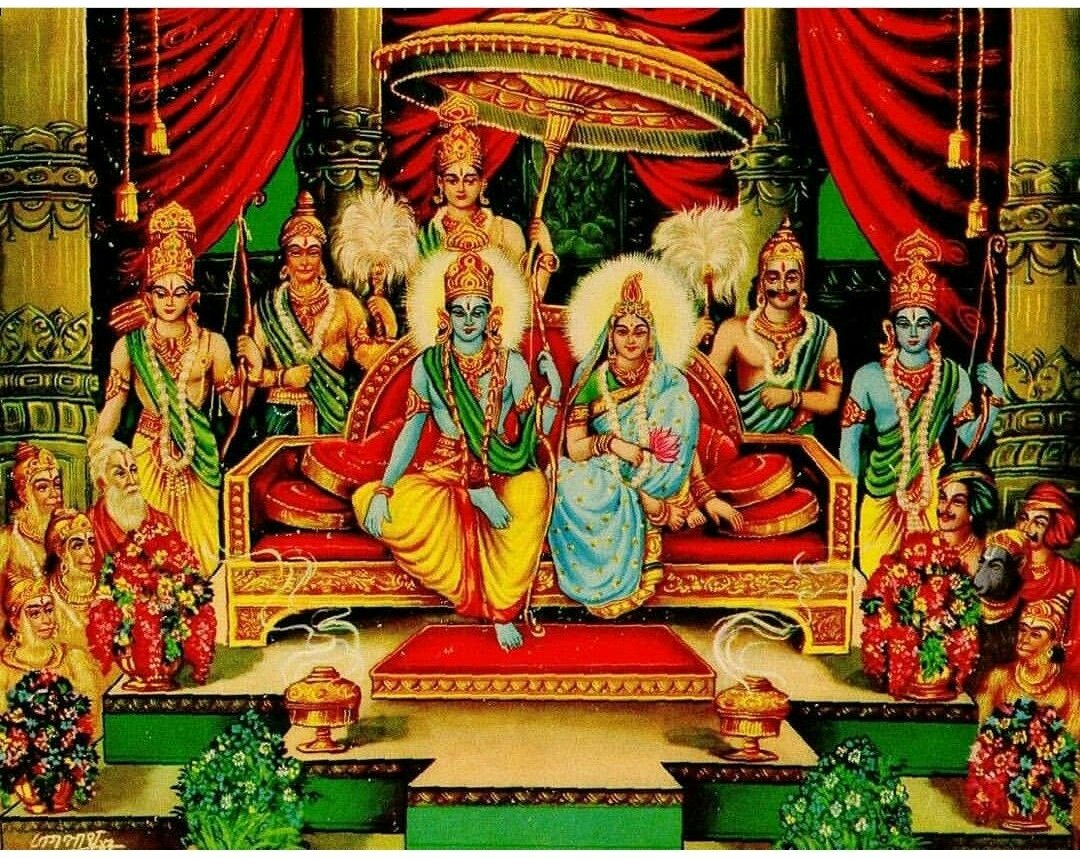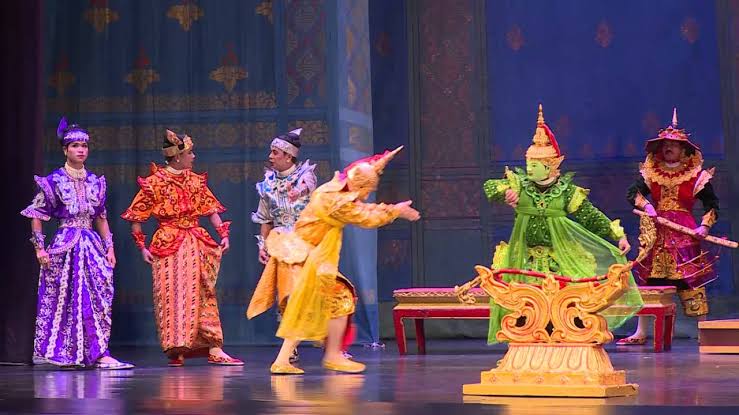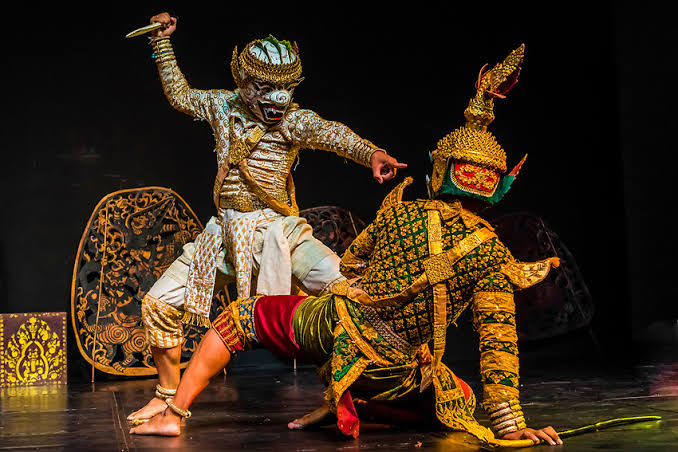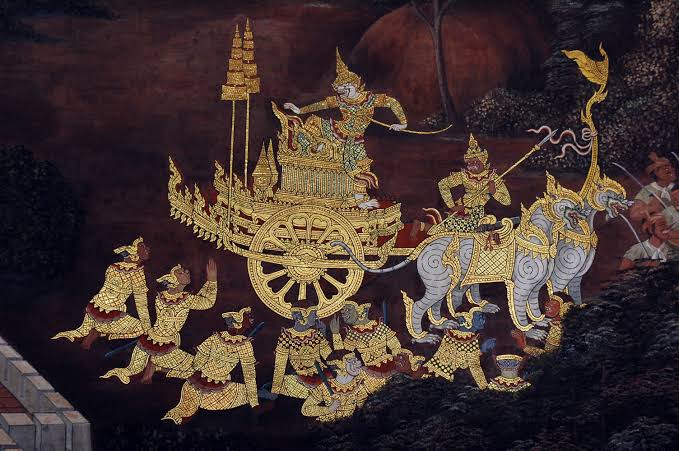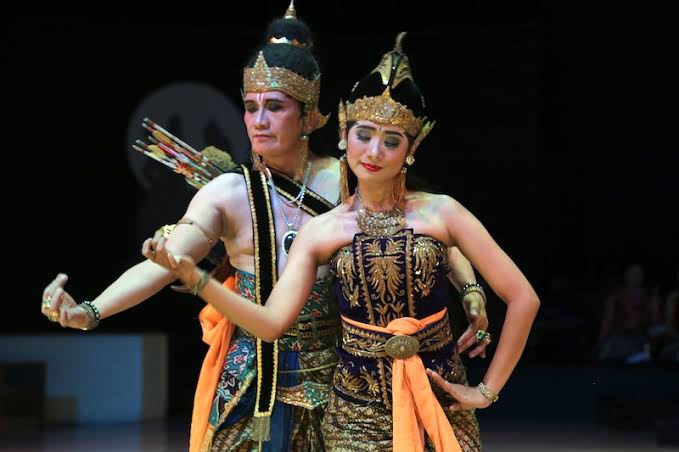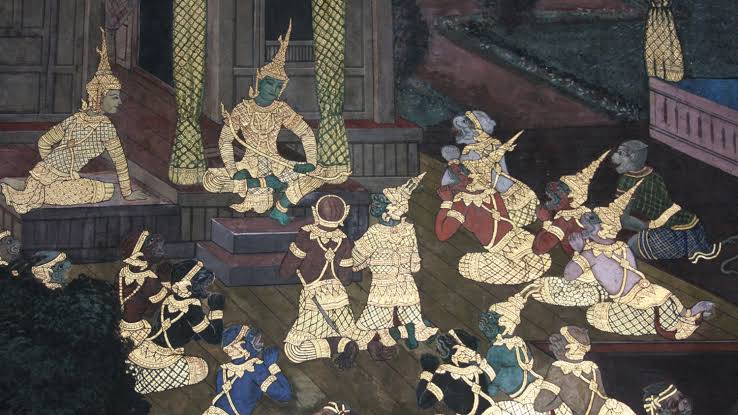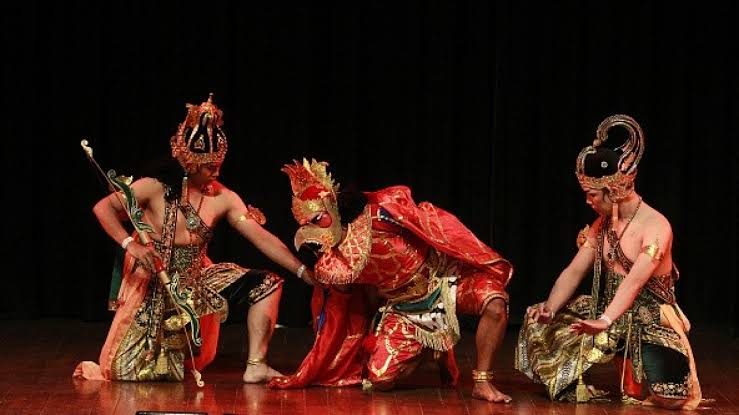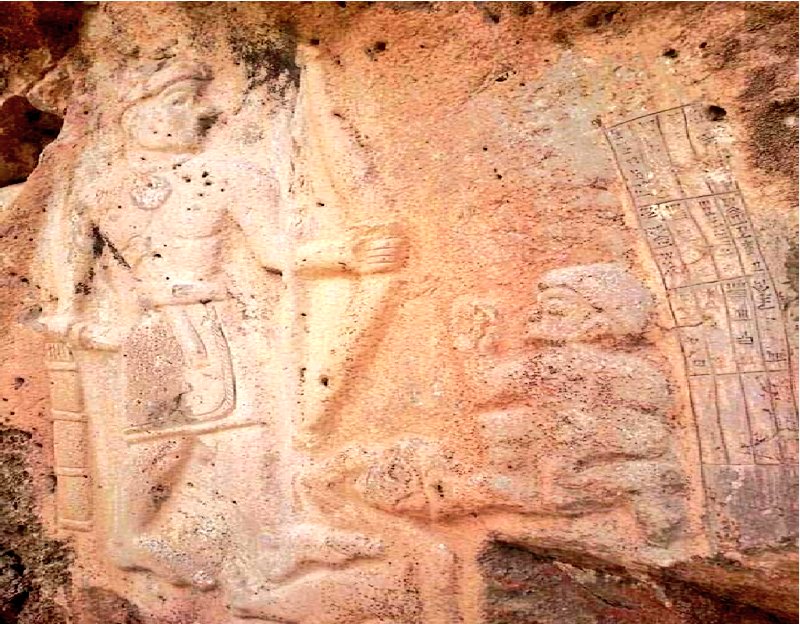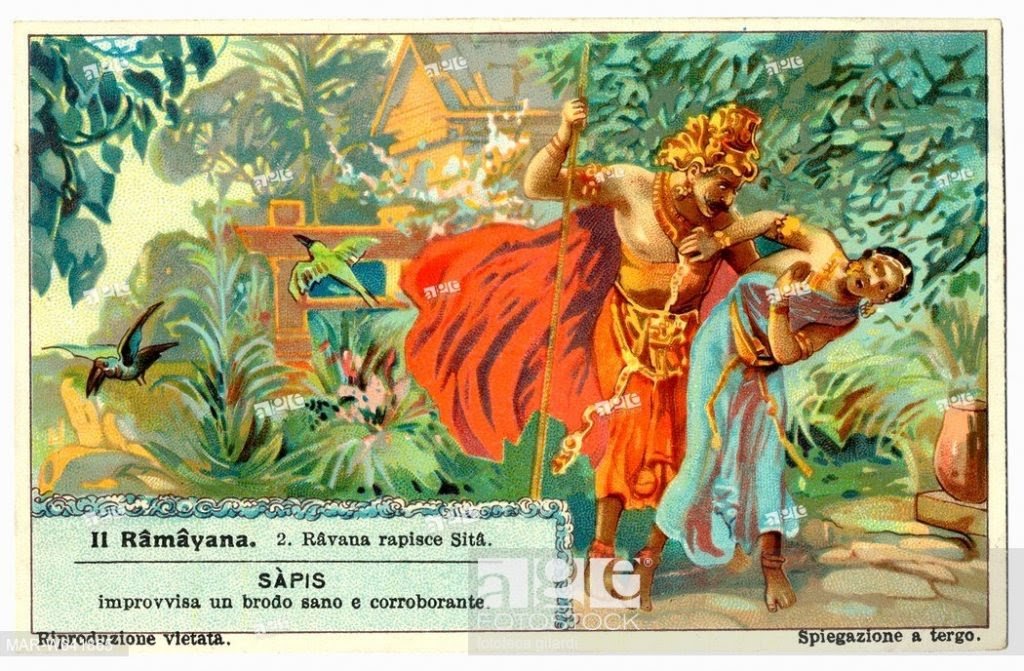Different Versions of Ramayana
Ramayana is an epic ancient scripture which highlights the legend of Shri Rama & is considered the greatest Hindu literary works of all time. Due to Hinduism’s far-flung outreach not only in India but in many other countries as well..
#Thread
Ramayana is an epic ancient scripture which highlights the legend of Shri Rama & is considered the greatest Hindu literary works of all time. Due to Hinduism’s far-flung outreach not only in India but in many other countries as well..
#Thread
Lord Rama’s adventures, his heroism, and his valor is venerated all across the world since centuries.
Let’s look at how the Ramayana is known as in different countries of the world:
Let’s look at how the Ramayana is known as in different countries of the world:
Ramayana in Myanmar
The Ramayana in Burmese is known as the ‘Yamayana’, ‘Yama’ or ‘Zatdaw’. It is the unofficial national epic of Myanmar. In this version, Rama is called ‘Yama’, Sita is called ‘Thida‘ and Ravana is called ‘Yawana’.
The Ramayana in Burmese is known as the ‘Yamayana’, ‘Yama’ or ‘Zatdaw’. It is the unofficial national epic of Myanmar. In this version, Rama is called ‘Yama’, Sita is called ‘Thida‘ and Ravana is called ‘Yawana’.
Ramayana in Cambodia
In Khmer literature, Ramayana is known as Reamker (Ramakerti – Lord Rama (Rama’s) + Kirti (Glory). It adapts concepts of Hinduism and the balance of good and evil in this world
It has many influences from the Thai and Lao version of the original epic.
In Khmer literature, Ramayana is known as Reamker (Ramakerti – Lord Rama (Rama’s) + Kirti (Glory). It adapts concepts of Hinduism and the balance of good and evil in this world
It has many influences from the Thai and Lao version of the original epic.
Ramayana in Thailand
In Thailand, it is known as Ramakien and is also considered as the national book of Thailand. In early Thailand (Siam), the Kings of the last dynasty called Rama held themselves as the true descendants of Rama and capital of Siam was known as Ayutthaya.
In Thailand, it is known as Ramakien and is also considered as the national book of Thailand. In early Thailand (Siam), the Kings of the last dynasty called Rama held themselves as the true descendants of Rama and capital of Siam was known as Ayutthaya.
Ramayana in Indonesia
Ramayana is known differently on different islands of Indonesia. It is called Ramakavaca in Bali, Kakawin or Yogesvara Ramayana in Java and Ramayana Swarnadwipa in Sumatra.
The Indonesian Ramayana traces its roots to the Sri Lankan version of Ramayana.
Ramayana is known differently on different islands of Indonesia. It is called Ramakavaca in Bali, Kakawin or Yogesvara Ramayana in Java and Ramayana Swarnadwipa in Sumatra.
The Indonesian Ramayana traces its roots to the Sri Lankan version of Ramayana.
Ramayana in Japan
In Japan, ‘Hobutsushu’ and ‘Sambo-Ekotoba’ are the most popular versions.
In another version is known as Bontenkoku, Tamawaka (Lord Rama) is portrayed as a flute player who rescues Himegini (Sita), his wife who was being held captive by King Baramon (Ravana).
In Japan, ‘Hobutsushu’ and ‘Sambo-Ekotoba’ are the most popular versions.
In another version is known as Bontenkoku, Tamawaka (Lord Rama) is portrayed as a flute player who rescues Himegini (Sita), his wife who was being held captive by King Baramon (Ravana).
Ramayana in China
In the Chinese Jataka stories of Rama, Liudu ji jing, a Buddhist text tells the story of Ramayana. In popular folklore, Sun Wukong, a monkey-king bears a stark resemblance to Lord Hanuman.
In the Chinese Jataka stories of Rama, Liudu ji jing, a Buddhist text tells the story of Ramayana. In popular folklore, Sun Wukong, a monkey-king bears a stark resemblance to Lord Hanuman.
Ramayana in Laos
Lao people believe that Laos was a city of King Lava who was the son of Rama (Lava-Kusa were sons of Rama and Sita) and their mention is found in Phra Lak Phra Ram, the national epic of the Lao’s.
Lao people believe that Laos was a city of King Lava who was the son of Rama (Lava-Kusa were sons of Rama and Sita) and their mention is found in Phra Lak Phra Ram, the national epic of the Lao’s.
Ramayana in Iraq
During archaeological excavations in Iraq, 6000-year old carvings of apes and men have been found in a cave. The carvings resemble Warad Sin and Ram Sin of Larsa who ruled Mesopotamia for 60 years. The Jataka tales also confirm that Lord Rama ruled for 60 years.
During archaeological excavations in Iraq, 6000-year old carvings of apes and men have been found in a cave. The carvings resemble Warad Sin and Ram Sin of Larsa who ruled Mesopotamia for 60 years. The Jataka tales also confirm that Lord Rama ruled for 60 years.
Ramayana in Russia
The Kalmyks of Russia trace roots from Mongolia. In Mongolia, a commentary by Dmar-ston Chos-rgyal of Dbus commentates about the Ramayana in Subhasitaratnanidhi.
Russian researchers claim that Kaikeyi was from Russia.
The Kalmyks of Russia trace roots from Mongolia. In Mongolia, a commentary by Dmar-ston Chos-rgyal of Dbus commentates about the Ramayana in Subhasitaratnanidhi.
Russian researchers claim that Kaikeyi was from Russia.
Ramayana in Italy
In some archaeological excavations, wall paintings in Italian houses from 7 BC depict scenes from the Ramayana such as many persons with tails and two men accompanied by a lady, and the men have bows and arrows on their shoulders.
In some archaeological excavations, wall paintings in Italian houses from 7 BC depict scenes from the Ramayana such as many persons with tails and two men accompanied by a lady, and the men have bows and arrows on their shoulders.
As you can see, thanks to the Ramayana, the legend of Shri Rama has transcended many religious, cultural and physical boundaries of the world.
।।जय श्री राम।।
।।जय श्री राम।।
Sources: http://Lordrama.co"> http://Lordrama.co and Voxytalksy

 Read on Twitter
Read on Twitter